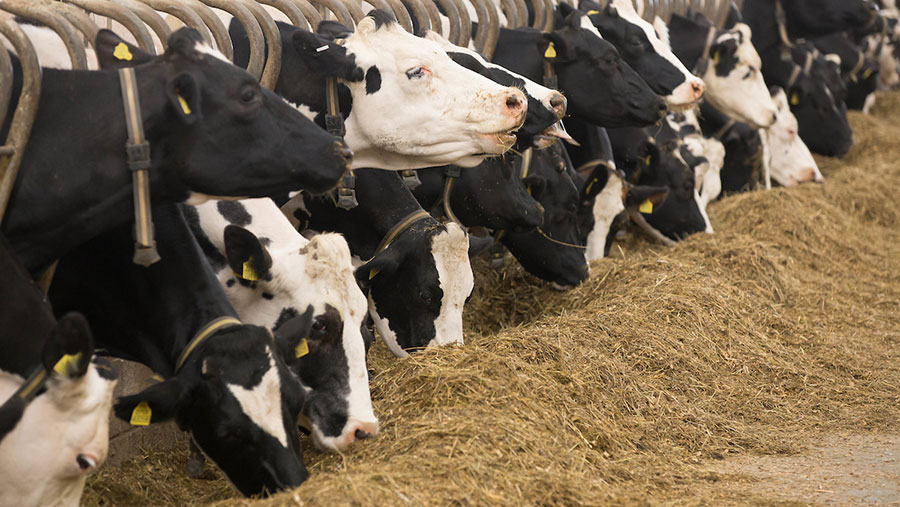3 tips on feeding fats in dairy rations
 © Tim Scrivener
© Tim Scrivener Carefully thinking about the ratio of different fatty acids in the diet at specific stages of lactation could bring big benefits to dairy performance, according to the latest US research from Michigan State University.
Dr Adam Lock, an expert on fats in dairy diets at the university, highlights three key areas to consider when feeding fats.
1. Feed a blend of fats to meet your farm’s needs
Not all fats were created equal. Think about the fatty acid balance of the fats being fed and when.
For example, palmitic acid promotes milk fat production, while oleic acid helps yields and promotes bodyweight gain after peak lactation.
See also: Fine-tuning fatty acid aids dairy performance, study shows
This means ratios need to be tweaked according to specific systems and milk contract requirements.
In general, less oleic is required after peak milk production to stop cows from getting too fat.
For the first two to three weeks of lactation, a fatty acid balance of 25-30% oleic and the rest palmitic acid is ideal.
Once cows have reached peak milk, and are at an ideal bodyweight for your specific system, oleic acid should be dropped back to 10%, with 90% from palmitic acid.
This can be achieved by buying a couple of products and blending it on farm or buying a pre-blended, specially designed product.
2. Consider feeding fats to fresh cows
A Michigan State University trial found that providing cows with an 60:30 blend of blend of palmitic and oleic acid resulted in a 4.5kg a cow/day increase in energy corrected milk (ECM) over the fresh period.
At the same time, these cows didn’t lose any more bodyweight over the control group that did not receive fats.
The supplemental fatty acids made up 1.5% of total diet dry matter and were fed for the first three weeks post calving.
The diet consisted of two-thirds maize silage and one-third alfalfa.
Fatty acids were taken out of the diet after three weeks, but the same yield effect was seen for a further seven weeks.
Cows fed an 80:10 blend of palmitic and oleic acid in the fresh period increased ECM to a similar level, but they lost more bodyweight over the control group.
This suggests there is a threshold for the palmitic and oleic ratio.
3. Could you feed fats to boost milk from forage?
Feeding palmitic acid has been found to give a 2-4% unit improvement in neutral detergent fiber digestibility when fed at 0.75-2% of the total diet dry matter.
As a result, incorporating this fatty acid into the diet can help boost milk from forage.
This is particularly relevant when farmers are faced with poorer-quality forage, as improved digestibility can help access its full potential.
Dr Adam Lock, of Michigan State University, was speaking at a recent Mole Valley Farmers’ event, hosted by the Templeton family at Pocknave Farm, Kilmarnock.
